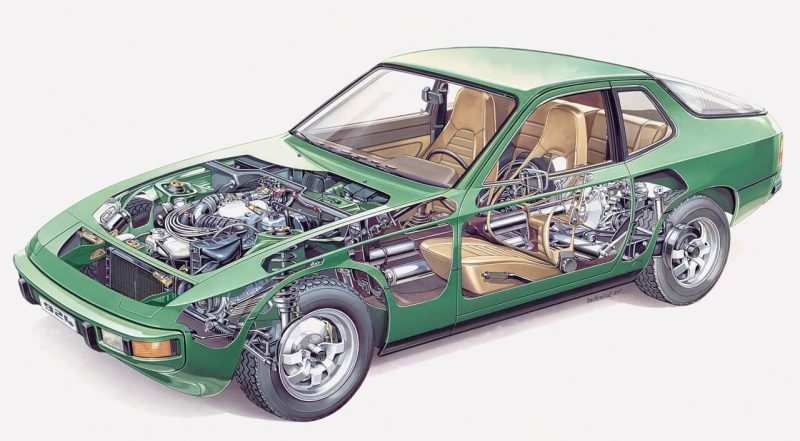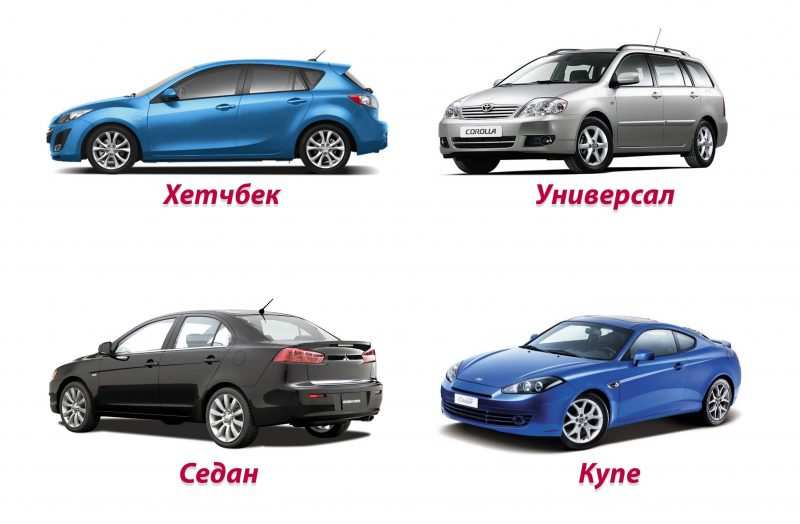The most detailed dictionary of automotive terms
Remember the situation when you first came to the forum of car mechanics. How many incomprehensible words have you met? A similar situation at the service station – an experienced specialist begins to explain the reason for the breakage in the language of terms, and you do not understand half of the words.
Do you want to be “on the same wavelength” even with the most advanced car mechanic, be able to maintain a conversation in the company of motorists? In this case, we recommend you to read the car dictionary.
It will save time in solving certain problems, will allow you to formulate your question much more accurately. You will be able to “figure out” at once a careless workshop worker who tries to deceive you “counting extra”.
The most important terms
We’re not going to go into the middle of nowhere. Even basic concepts will be quite enough. Learn what the basic components are called and what function they can perform.

In case of a breakdown you can easily explain the essence of the problem to a workshop specialist and find its solution on the forum.
So what are the most common terms?
- Mower unit – classic car engine;
- Transmission are components that transmit energy. Transmissions include clutch or torque converter, gearboxes, axle gearboxes and drive shafts. Transmission is also called gearbox;
- Silo line – it includes the above mentioned transmission, engine;
- Convolution – is a very important part of the motor. Thanks to it, the torque is transmitted and the linear motion is ensured;
- Carter – he’s a tray. Accumulates grease and supports some parts. It also protects the powertrain from dirt ingress;
- If you’ve heard that a group of drivers are discussing the handset, you should know that it’s a pendant;
- Main gear – responsible for the rotation of the wheels and traction of the vehicle;
- Differential – mechanism that deals with the redistribution of thrust. As a result, the car’s wheels rotate at different speeds when turning;
- Reducer – main gear + differential, which are united by one housing;
- Carburetor – the most important detail responsible for the preparation of the fuel mixture. Gasoline passes through a narrow opening and is sprayed in the air;
- Injector – the same as the electronic injection. It is a small chip that controls the fuel supply system;
- Starter – device that starts the motor. In fact, it is a small motor that drives the pistons;
- Kardan – synchronizes shaft rotation;
- Axle – is the element that connects the car wheel with the main gear;
- Junction box – is used to redistribute the torque. Sometimes it has a reduction gear that improves traction capabilities;
- As well as we can’t bypass clutch. This is the most important part of the vehicle that briefly separates the engine and gearbox. Provides fast gear changes without damaging the car’s components.
Mindings of small components
It is impossible to imagine a dictionary of motorist terms without small components. Knowledge of the main components will be especially useful for those who plan to repair the car by themselves. For this purpose it is necessary to remember such terms:
- The collector connects several auto channels at once. You should distinguish outlet manifold from inlet manifold. In the first case it is a question of connecting the exhaust to the engine, in the second – the device for fuel distribution;
- Gland – protects car components from oil and other liquids escaping;
- Relay – connects electric circuits when a signal is received from outside;
- Stupica – is located in the center of the wheel, it is a support for the rim. Automechanics call the hub a seat together with the brake mechanism;
- Tachometer – shows the actual speed at which the crankshaft rotates. The tachometer tells you when it’s best to shift gears and how to avoid damaging the car due to exceeding parameters;
- Molding – the bodywork of modern cars is glued with a decorative bar for protection;
- Immobilizer – it is thanks to this that your iron horse is only started with the original ignition key;
- Reling – another detail you could see on many off-road vehicles. It’s a roof guide that lets you lock in the extra load.
Body types: how do you tell the difference?
Many newcomers are actively interested in such issues as the types of car bodies. The reason is quite clear – recently there have been many types of vehicles.

There used to be some information about them that could only be found in the directories. Start studying the dictionary right now:
- Sedan – is perhaps the most common option among foreign business class cars. The layout is three-volume, there are separate trunk and hood covers;
- Cupe – differs from the sedan by the number of doors. There are only two of them instead of four. But the layout is the same as described above;
- Hatchback – compact size vehicle. The boot lid is always raised with the glass and no additional seats can be installed;
- Universal – Car with increased payload. The rear overhang is extended, there is an additional door. Sometimes it is possible to install an additional row of seats in wagons;
- Liftback – the same hatchback, but brightly stylized as a sedan. The boot lid stands out visually. But alas, it rises with the glass;
- Fastback – imagine a sedan with a sloping roof and a slight increase in length;
- Minivan – high capacity vehicle designed to carry 7-11 people. Its roof is much higher, and the overhang is elongated;
- Compactvan – minivan for five seats or with extra seats for children;
- Microven – If you increase the roof of the hatchback and luggage compartment capacity, you get a comfortable microwave
- Combie – “Soviet” hatchback or universal name;
- Hardtop – is a coupe or sedan without a side pillar;
- Cabriolet – two-door vehicle without a hard roof. However, if it rains, a tarpaulin or plastic construction will protect the vehicle from the weather;
- Cupe-Cabriolet – has a hard folding roof that folds out automatically;
- Faeton – auto open type, but with 4 doors. It is produced very rarely, because with this structure the body is not very strong;
- Lando – resembles a convertible, but the roof is only cleaned above the passenger seats at the back. Sometimes the word lando is used to describe machines that have panoramic roof hatches;
- Brogam -tonodes with open seats in front;
- Car with a partition between the driver, passengers are usually called limousine>
- Stretch or stretch – vehicle extension;
- Rodster – sports version of the car for 2 seats. When the windshield is removable, we deal with a spider. But the tag is a roadster with a safety arch over the driver’s and his passenger’s heads;
- Pickup – that’s what, and the pickup car will be recognized by many. In the U.S., pickups are particularly popular. That’s the name of a car that has a truck that has a separate platform.
- Unroad vehicle – Wheel-drive vehicle, which is suitable for driving in bad conditions. Almost all off-road cars have a body, the shape of which is reminiscent of a stationary car;
- Crossover – Road vehicle that will easily pass through light obstacles on the road. Unlike an SUV, off-road crossover is not the best option;
- Parquetnik – “light” version of the crossover. That’s what they call a car with the most common cross-country ability, which is stylized as a crossover;
- Vehicle – and you will not confuse this variant with anything. Right behind the front seats, it has a cargo bay starting at the front;
- Microbus (beads, van) – this is the name of the large minivan with the engine under the cab and the number of seats from 9 and above.
This list can be continued, because there are also nightbacks, townhouses and so on. However, they are not widespread, and some experts do not even recognize them.
Encrypting abbreviations
Have you noticed how many cuts are used by car manufacturers? Sometimes they can confuse even an experienced technician. Let’s look at abbreviations to avoid confusion:
- ABS is the vehicle’s anti-locking system. Improves grip on slippery roads, making braking intermittent and smooth;
- AC – air conditioning;
- ESP – it is an electronic stabilization kit. ESP collects information from the car’s sensors, identifies dangerous situations and corrects the driver’s actions.
- TCS – fuel management system. Responsible for a smooth start without skidding, regardless of coating;
- PCS – talk about driver and passenger safety. If a collision cannot be avoided, the PCS system automatically turns off the power supply, sets the head restraints in the optimal position and tightens the seatbelts;
- Injection systems GDI, , FSI;
- Diesel cars are often fitted with CDI or CRDi. These are systems that enable high unit throughput, reduced emissions and minimized fuel consumption;
- WT, CWT, WTi – automatic phase change system. Optimizes engine performance, reduces fuel consumption and improves dynamics;
- 4WD, 4x4, AWD. That’s what four-wheel drive vehicles mean;
- 4WSAWS, 4WAS. Fully steerable machine with rear axle wheels in a small angle from the original position;
- EGR is a system that recycles exhaust gases. It reduces the toxicity of emissions;
- Also each machine has its own VIN or identification number. It is unique.
Add-only equipment
For many people, there are still some equipment designations that are not clear. The following terms are the most common:
- Climate control – Automatically control the blower, temperature. Supports comfortable conditions;
- Cruise control – primitive version of the “autopilot”. Able to keep the car speed at the same level if the road is free;
- Safety cushion – of course, it’s better never to see it in action. Inflatable device to soften the impact during an accident;
- Belt tensioners – mechanism that automatically presses a person against the seat during an accident;
- Light and rain sensors – will react to the weather outside the window. If necessary, start the wipers and turn on the headlights;
- Central lock –automatically closes the doors. To disable it, just press the button on the key or turn the key in the lock.
English markings
When purchasing a vehicle abroad, we often encounter English terms. Even if you’re good with English, deciphering highly specialized words isn’t a bad idea.
That brake is a brake, and belt means a belt, many people know. But what about Exhaust or Fuse?
- Bearing is bearing, body;
- Dashboard is the dashboard, and Fender is the body wing;
- The above exhaust and <fuse is the exhaust system and fuse respectively;
- Color – pad, relay will be relay and candle – spark plug;
- The trunk of a car is called trunk and the turbocharged.
People’s art – motorists’ slang
Finally, we would like to tell you about the informal slang used by motorists.

It is known that some masters use these words for collusion or even fraud. To avoid being cheated, print them out, or better yet remember:
- Stanes – manifold nozzle with special bifurcated shape;
- Sleeves – filter housing;
- Torpedo – front panel;
- The knee is commonly called the crankshaft;
- If the car fails, the tie is used for towing, it is also a rope;
- Engine piston or cylinder is called pot and spar is ski;
- Salvinic is dry,EBU is brain, deflector is flapper;
- Few people know that the silencer expander is called a bucket and the voltage stabilizing relay is called a chocolate bar.
Output
The “great and mighty” language of motorists has been enriched by dozens (if not hundreds) of new terms. It is impossible to keep track of every word, so many technical experts propose to introduce a single system of designations.
If standardization is accepted, the lives of car mechanics and ordinary drivers like you and me will be greatly simplified.
